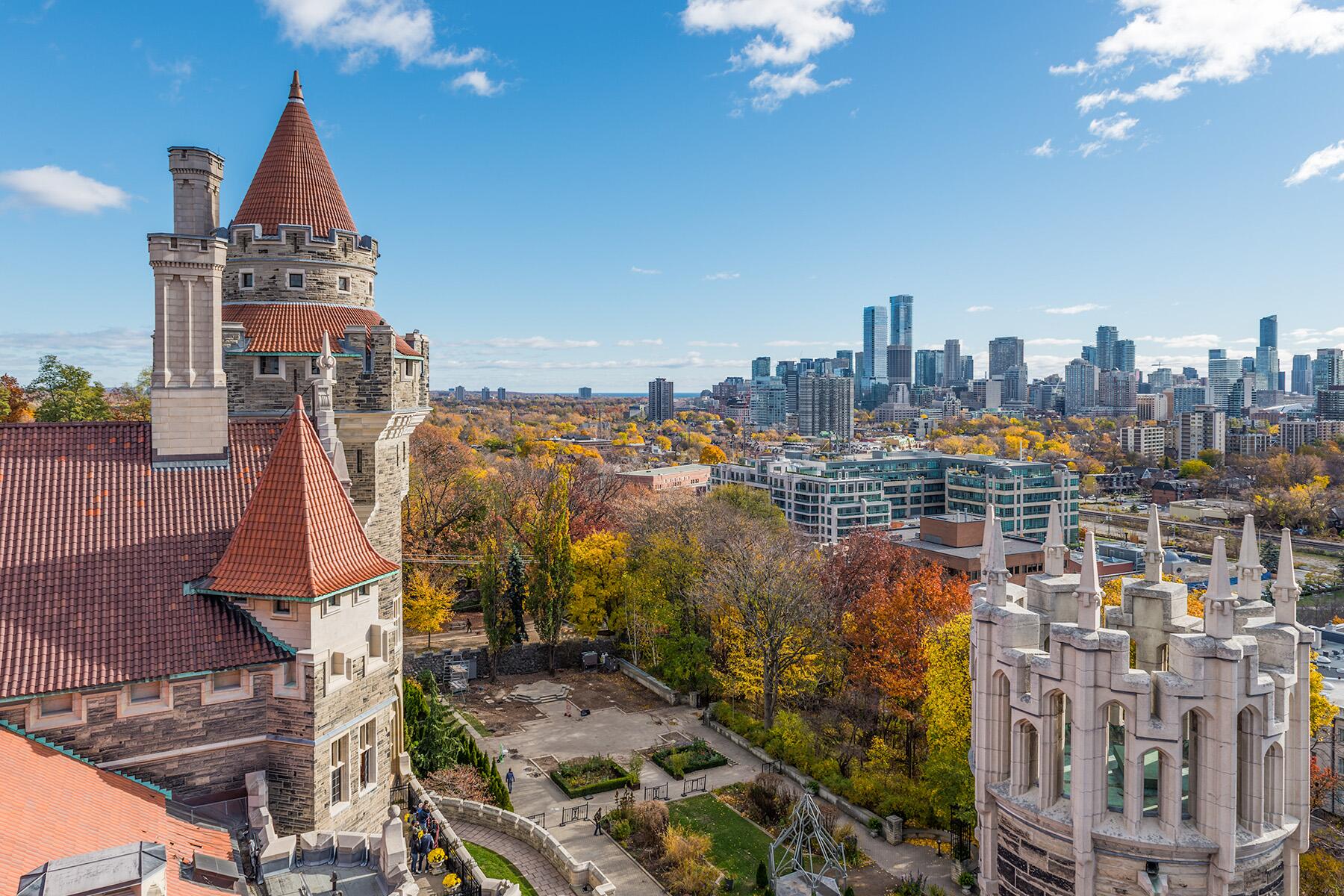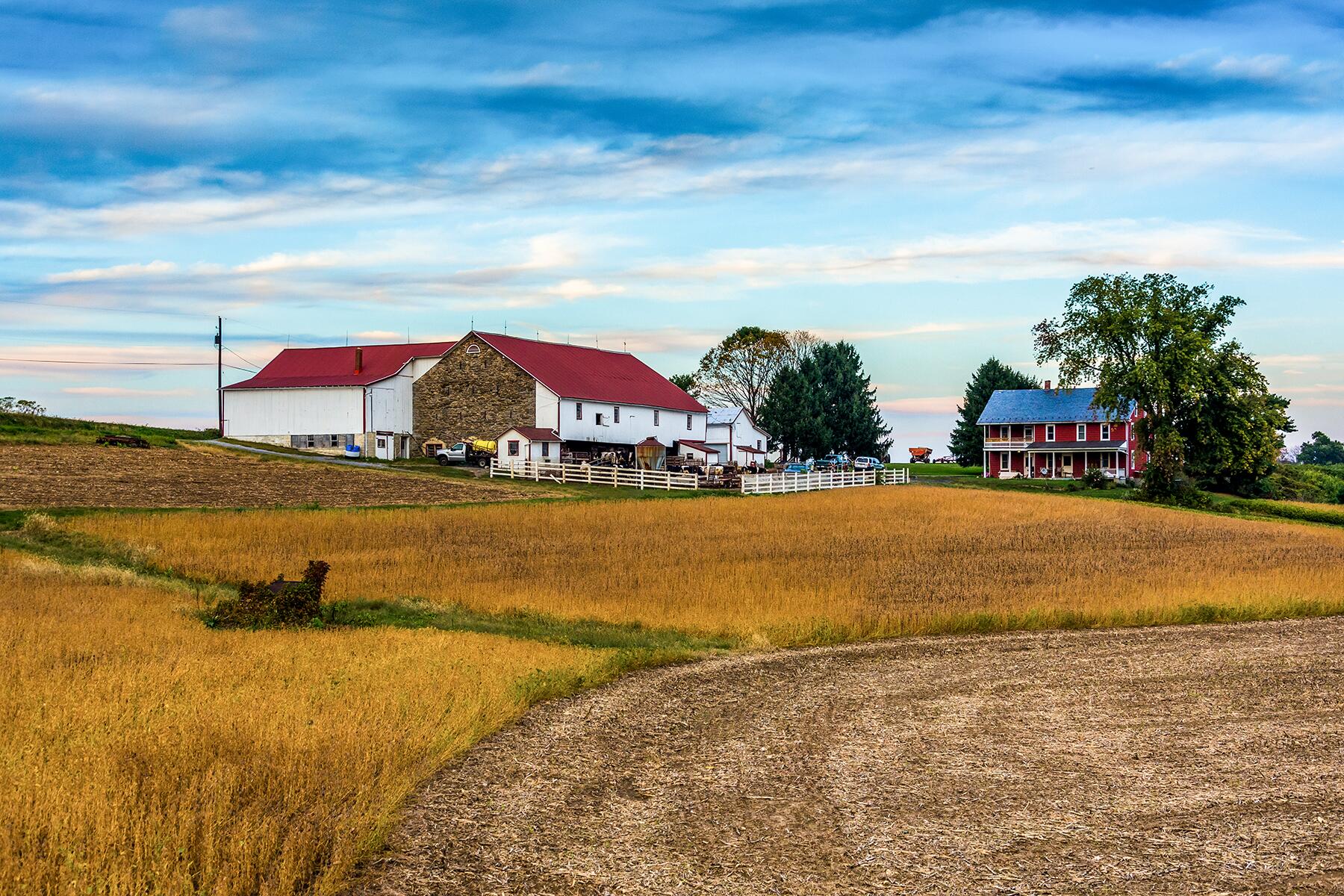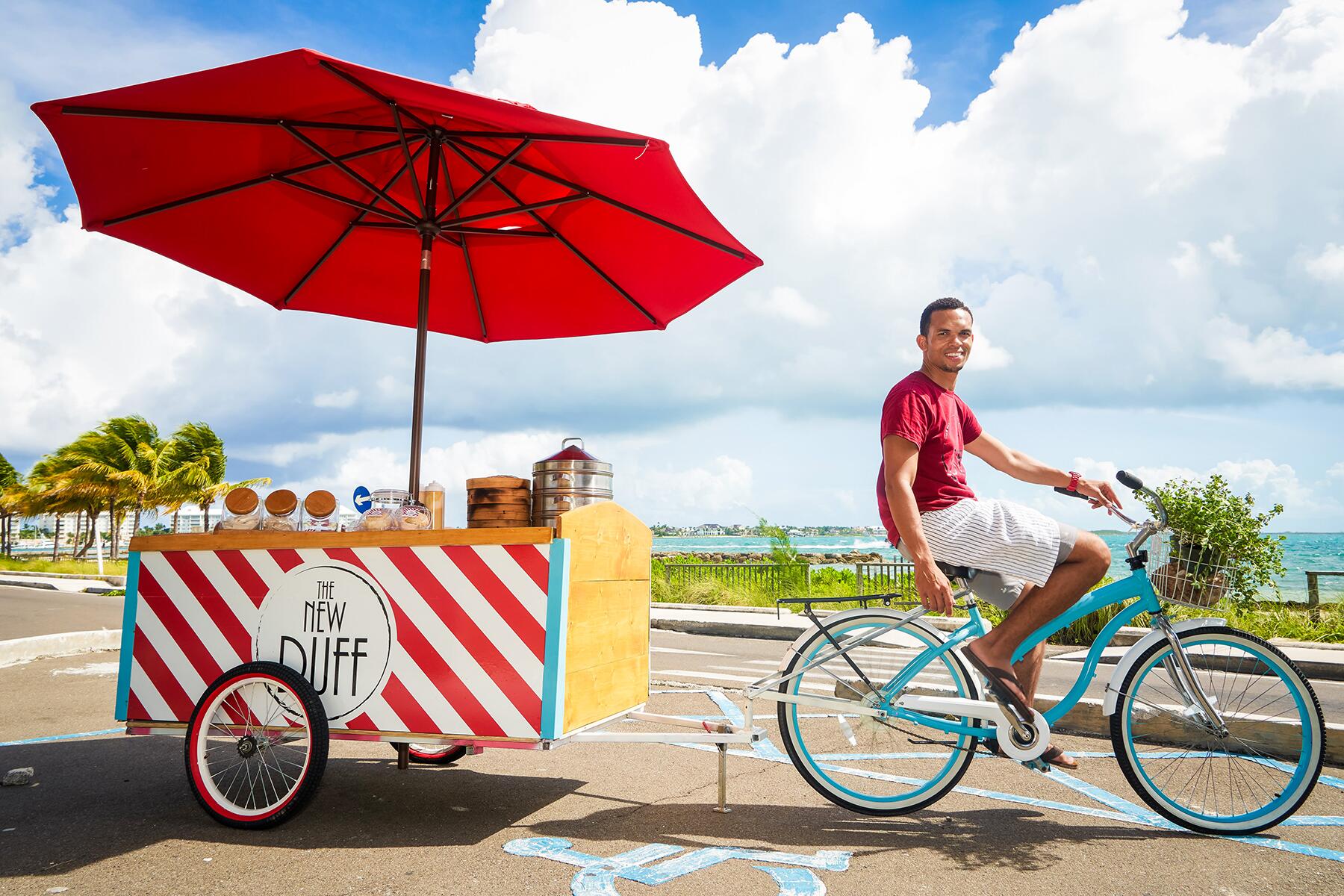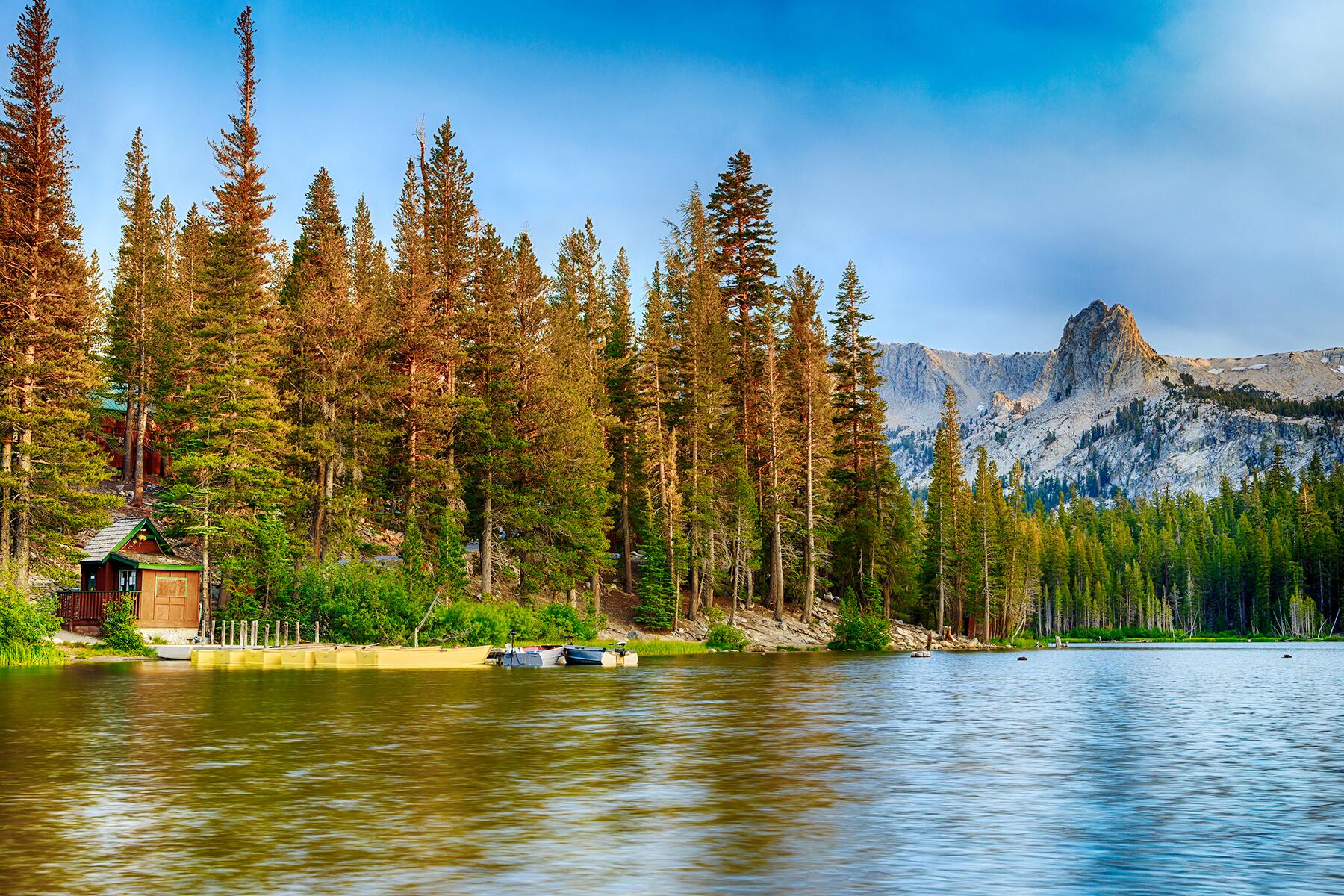Our new series on weekend road trips aims to inspire you for what's to come as we slowly return to travel.
Covid-19 Disclaimer: Make sure to check the status of the states, regions, and establishments in which you’re planning to visit prior to travel. Many regions continue to see high infection rates and deaths, while many states and counties remain under varying stay-at-home orders. Those traveling from areas with high rates of Covid-19 should consider avoiding travel for now in order to reduce spread.
Also note that the Mammoth Lakes area remains closed to visitors and this article should currently only be used for planning purposes for when it’s safe to travel again.
Mammoth Lakes, at an altitude of 7,860 feet, may be best known for its top-of-the-world ski slopes and buzzy wintry scene, but summer is supreme too—sans the crowds. With 3,500-acres of outdoor bliss, featuring Alps-like peaks in the heart of the Eastern Sierra, some of the nation’s best hiking, canoeing, mountain biking, rock climbing, and camping abounds. The centerpiece is Mammoth Lakes Basin, where a faux-Tyrolean resort village has all the accouterments of modern-day society, ensuring you can have your frou-frou tiki cocktail after a day in the wilds. And, oh yes, as its name hints, there are lakes–lots of cold mountain ones that are so clear, you can see the trout swimming beneath the surface. This is an outdoorsy, pine-scented getaway, with something for everyone, and plenty of pampering to boot.
Recommended Fodor’s Video
INSIDER TIPThe surrounding Mono County was hit hard by COVID-19, and Mammoth Lakes isn’t allowing in visitors for an indefinite time period, for fear of not being able to care for them at the small hospital, should they get sick. Be prudent and respectful when visiting, because as resort-y a place it is, it’s also home to 8,000 residents.
GETTING THERE
Mammoth Lakes is about 320 miles from San Francisco, with a couple of options available to drivers. CA-120 (Tioga Pass) through Yosemite National Park is the quickest, with a driving time at about six hours. You can also take CA-108 over Sonora Pass, which has limited services, but with fewer travelers is sometimes better on weekends than CA-120. In winter, many of the trans-Sierra highways are closed, so the best option then would be U.S. 50 via Carson City, and then south on U.S. 395; this trip takes between six and seven hours.
Mammoth Lakes is also accessible from Los Angeles. The 325-mile drive takes between five to six hours, via CA-14 and U.S. 395.
If you get an early start, the six-hour drive from San Francisco should have you pulling into Mammoth Lakes about noon. Cradled by the jagged peaks of the Sierra Nevada, the Mammoth Lakes Basin boasts more than a dozen fish-filled lakes, myriad hiking trails, and five campgrounds. Towering above it all is Mammoth Mountain, beloved by winter skiers and summer hikers and cyclists. But first things first: find lunch in the Village at Mammoth, the region’s largest town. Gomez’s is a perennial favorite for Mexican—and features 200-plus margaritas to boot (habañero mango, anyone?). Another option is picking up grab-and-go for a picnic at Bleu Market and Kitchen, an epicurean market featuring handcrafted sandwiches, good-for-the-soul soups, and fresh salads.
Spend the afternoon strolling through Mammoth Lakes village, poking into art galleries, boutiques, and mountain-gear shops, and sipping coffee at a local café. If you’re rearing to get a start on the activities, cyclists will adore the Lakes Basin Path, a 5.3-mile multi-use trail connecting North Village and Horseshoe Lake, passing many lakes along the way. Hikers have their pick of trails for more lake and mountain views, including the quick hike up to McLeod Lake. For a touch of history, Mammoth Consolidated Mine gold-mining camp, a short drive from town, is a veritable ghost town where a trail wanders past ramshackle buildings and equipment left over from the days when this camp hummed with activity.
Après-ski or hike, cocktails are served up nearly everywhere in the Village. At Shelter Distilling, every element of their cocktails are made onsite, liquor, bitters, syrup, and garnishes included. For the beer lovers, Mammoth Brewing Company has a fun beer garden.
Just as night falls, soak in the Alps-like ambiance of Austria Hof Lodge, Restaurant, and Bar, where the menu is a panoply of German and American fare: sesame-coriander ahi tuna and panko shrimp; spicy vegetable linguini; rack of pistachio-and-black-pepper-crusted elk; and, of course, Wienerschnitzel.
And now, how about those tiki drinks? Lakanuki is the place to go for a pint-size Mai Tai, the perfect capper to the day.
If you’re an early riser, opt for a soothing soak as the sun climbs its way over surrounding peaks at Wild Willy’s natural hot springs. Then grab breakfast at Stellar Brew and Natural Cafe—perhaps a burrito, breakfast sandwich, homemade granola, or acai bowl—and a cup of steaming organic brew.
Today’s the day to head to the top of the region’s king of peaks: Mammoth Mountain. A scenic gondola takes hikers (and cyclists and skiers) to the top of the 11,053-foot mount with dizzying, 360-degree views showcasing
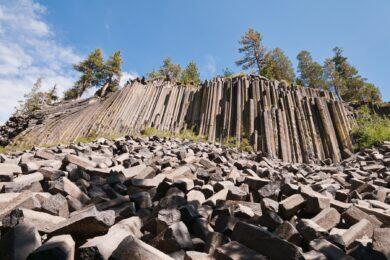
the Minarets, Mono Lake, and a grandiose swath of the Sierra’s highest peaks. Hikers have their choice of miles of trails, either to stroll around the summit or head all the way back down (you could hike up too—a strenuous, all-day endeavor). Some of the nation’s finest mountain-biking trails take off from the summit as well, as part of Mammoth Mountain Bike Park, offering 80-plus miles of singletrack for beginners and experts alike; tickets provide unlimited uphill access on chairlifts and the gondola. And skiers and snowboarders are happy too (there can be snow into July). If you’re just sightseeing, have lunch at Eleven 53 Café—the menu includes Asian noodle bowls and Indian-spiced wraps—and hop aboard the gondola for the trip back down.
Once back on the valley floor, you can opt for another hike. The 1.5-mile out-and-back from Lake George to Lake Barrett is popular for its payoff of astounding views for very little effort. Bring a fishing rod to try your luck for trout in Lake George; fishing season runs April through mid-November.
Another option is a visit of Devils Postpile National Monument, where striking, 60-foot-high volcanic basalt columns tower over the landscape, looking every bit like a pile of oversized matchsticks scattered by a giant. A short trail leads to a bird’s-eye view. The other must-see here is the 101-foot-high Rainbow Falls, accessible via a 2.5-mile trail; midday is best for rainbow sighting; keep in mind that the area is open only mid-June through mid-October and day-use summer visitors must ride the shuttle bus from the Mammoth Mountain Ski Area.
Sunset views are prevalent in Mammoth, and you can catch one of the best from Minaret Vista, about 1.5 miles past the ski area’s main lodge along CA-203. Before you, the sun dips behind the snaggletooth Minarets, rising up from the Ansel Adams wilderness. It gets chilly and windy up here, so bring something warm.
Dinner tonight is at the lively Morrison’s Restaurant and Bar, the place to go whether you’re craving pistachio elk, filet mignon, pesto pasta with chicken, crispy skin barramundi, or a good old-fashioned cheeseburger. Ask for a table by the roaring fire.
Stop by the Looney Bean for breakfast; grab a steaming coffee crafted from locally-roasted beans and one of their scrumptious housemade pastries. Now, pack up and leave Mammoth Lakes, heading north on U.S. 395 to Mono Lake. The lake is what they call a soda lake, with unusually high alkalinity, due to the fact that there’s no outlet, causing high levels of salt to accumulate. Its mineral levels are so high, in fact, that only brine shrimp, algae, and the pupae of the ephydra fly can survive in its depths. But what’s most striking here are the spectacular tufa towers rising out of its mirror-like waters, amid surrounding snowcapped peaks. Created underwater as calcium-rich hot springs mixed with the carbonates of the lake water (resulting in
calcium carbonate, or limestone), they emerged when the city of Los Angeles diverted lake waters back in the ’40s, thereby lowering the water level. Conservation efforts have helped to raise the water levels, though the fight is far from over.

The best places to see a bunch of the fantastical towers is South Tufa, where a self-guided tour winds through their midst. If you want just a quick glance, the Old Marina, just off U.S. 395, is one of the easiest spots to get to. Keep an eye out for the astounding variety of birds here. As a vital stop on the Pacific flyway, its bird-watching is primo. Chances are, any seagull you spot at a California beach probably hatched at Mono Lake.
As you make your way farther north on U.S. 395, you’ll pass by the June Lake Loop, offering one last dose of nature before heading home. The 17-mile loop accesses several sparkling glacial lakes. As you can imagine, it’s drop-dead gorgeous in the fall. If you’re hungry, grab a Hawaiian taco or classic Hawaiian-style lunch (Kalua pig and Huli Huli Chicken) at Ohanas 395 in the village of June Lake.
WHERE TO STAY
Mammoth Lakes offers a spectrum of accommodations, from campsites and forest cabins to family-friendly condos to elegant hotel rooms. Campers can pitch their tents beneath a shady pine forest or along an alpine lake. Rustic cabins at Woods Lodge, set in a stunning location on Lake George, have fireplaces and full kitchens. 1849 Condos is a good resource for condo and townhome rentals. And for those looking for something posh, Snowcreek Resort is an excellent choice, with stunning views, a meandering creek in its backyard, and a nine-hole golf course adding to its allure.
WHEN TO GO
Mammoth Lakes is a year-round destination, with strikingly different activities depending on the season. In summer, when the temps are refreshingly cool, hiking and mountain biking are primo. In winter, it’s all about the snow and the skiing. Spring and fall see the fewest amount of visitors, with thunderstorms in spring and the temperatures starting to drop in fall.
